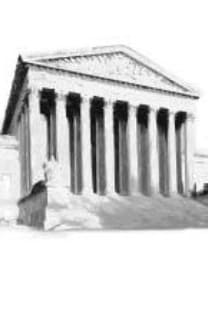Thomas Kuhn'un paradigma kavrayışı üzerine analitik bir irdeleme
Thomas Kuhn, Bilimsel Devrimlerin Yapısı adlı kitabıyla bilim felsefesi çalışmalarında yeni bir çığır açmıştır. Özellikle klasik bilim algısına yönelik karşı çıkışları ve bilimsel sürecin kırılma noktaları üzerine olan vurgusu, metnin 1962 tarihli ilk basımından günümüze değin hâlâ yoğun bir biçimde tartışılmaktadır. Bilindiği üzere bilimsel etkinliği esasen olağan bilim ve devrim dönemleri üzerinden karakterize eden Kuhnun çalışması paradigma terimini eksen kabul eder. Bununla birlikte terimin söz konusu kitapta son derece geniş bir fenomen örgüsünü adlandırmak için kullanılması, paradigma terimi hakkında adeta bir mitolojinin doğmasına neden olmuştur. Dahası Kuhn, özellikle 60ların sonu ve 70lerde terimin anlam katmanlarını berraklaştırmak için yeni bir dizi tanım sunma cihetine gitmiş ve bu husus tartışmaları daha da alevlendirmiştir. Bu çalışmanın hedefi, Thomas Kuhnun paradigma kavramını analitik bir düzlemde incelemektir. Bu çerçevede, gerek Kuhnun 1962 tarihli Bilimsel Devrimlerin Yapısı, gerekse de ilgili sonraki çalışmaları üzerinden, paradigma terimi derinlemesine çözümlenecek ve açıklanmaya çalışılacaktır.
An analytical examination on Thomas Kuhn s conception of paradigm
Thomas Kuhn has made an influent contribution to philosophy of science with his epoch-making book The Structure of Scientific Revolutions. His arguments that especially against to classical apprehension of sciences and emphasis on revolutionary aspects of scientific process have created great discussions among the philosophers of science since the birth of the Scientific Revolutions in1962. Kuhn s understanding of scientific process within the framework of normal and revolutionary phases of science does accept the notion of paradigm as a fundamental basis and this obviously well-known by the authorities. Nonetheless, usage of that term at the Scientific Revolutions for a designation of various different phenomena has brought forth a kind of paradigm-mythology almost. What is more, while he was trying to clarify the meaning constituents of the paradigm at the end of the 60 s and also 70 s, he partially renewed his former definitions for paradigm. But contrarily to his aims, his explanatory approach has interestingly inflamed the disputations around the paradigm. The aim of this study is to explicate Thomas Kuhn s conception of paradigm in an analytical way. In this context, not only with a critical examination of his magnum opus (i.e., The Structure of Scientific Revolutions) but also his related following later works; that famous and controversial notion of paradigm is going to be deeply analyzed.
___
- DEMİR, Ömer (2000) Bilim Felsefesi, 2. Basım, Ankara: Vadi Yayınları.
- EARMAN, J. (1993) Carnap, Kuhn, and the Philosophy of Scientific Methodology, World Changes, ed. P. Horwich, pp. 9-36, Cambridge: MIT Press.
- FRIEDMAN, Michael (1991) The Re-Evaulation of Logical Positivism, The Journal of Philosophy, Vol. 88, No. 10, Eighty-Eight Annual Meeting American Philosophical Association, Eastern Division, (Oct., 1991), pp. 505-519.
- FRIEDMAN, Michael (2002) Kant, Kuhn, and the Rationality of Science, Philosophy of Science, Vol. 69, Iss. 2, (June, 2002), pp. 171-190.
- HOYNINGEN-HUENE, Paul (1992) The Interrelations between the Philosophy, History and Sociology of Science in Thomas Kuhns Theory of Scientific Development, The British Journal for the Philosophy of Science, Vol. 43, No. 4, (Dec., 1992), pp. 487-501.
- IRZIK, Gürol (2002) Carnap and Kuhn: A Belated Encounter, In the Scope of Logic, Methodology and Philosophy of Science, Vol. II, eds. P. Gardenfors, J. Wolenski and K. Kijina-Placek, pp. 603-620, Dordrecht: Kluwer Academic Publishers.
- IRZIK, Gürol & Teo GRÜNBERG (1995) Carnap and Kuhn: Arch Enemies or Close Allies?, The British Journal for the Philosophy of Science, Vol. 46, No. 3, (Sep., 1995), pp. 285-307.
- IRZIK, Gürol & Teo GRÜNBERG (1998) Whorfian Variations on Kantian Themes: Kuhns Linguistic Turn, Studies in History and Philosophy of Science, Vol. 29, No. 2, pp. 207-221.
- KUHN, Thomas S. (1970) The Structure of Scientific Revolutions, 2nd Edition, Enlarged, Chicago: The University of Chicago Press.
- KUHN, Thomas S. (1977) The Essential Tension: Selected Studies in Scientific Tradition and Change, Chicago: The University of Chicago Press.
- KUHN, Thomas S. (1994) Asal Gerilim. Bilimsel Gelenek ve Değişim Üzerine Seçme İncelemeler, çev. Yakup Şahan, İstanbul: Kabalcı Yayınevi.
- KUHN, Thomas S. (1995) Bilimsel Devrimlerin Yapısı, çev. Nilüfer Kuyaş, 4. Basım, İstanbul: Alan Yayıncılık.
- LAKATOS, Imre & Alan MUSGRAVE (1974) Criticism and the Growth of Knowledge (Proceedings of the International Colloqium in the Philosophy of Science, London, 1965), ed. I. Lakatos ve A. Musgrave, London: Cambridge University Press.
- LAKATOS, Imre & Alan MUSGRAVE (1992) Bilginin Gelişimi ve Bilginin Gelişimiyle İlgili Teorilerin İncelenmesi, ed. I. Lakatos & A. Musgrave, çev. Hüsamettin Arslan, İstanbul: Paradigma Yayınları.
- MASTERMAN, Margaret (1974) The Nature of a Paradigm, Criticism and the Growth of Knowledge (Proceedings of the International Colloqium in the Philosophy of Science, London, 1965), ed. I. Lakatos ve A. Musgrave, pp. 59-89, London: Cambridge University Press.
- MASTERMAN, Margaret (1992) Paradigmanın Doğası, Bilginin Gelişimi ve Bilginin Gelişimiyle İlgili Teorilerin İncelenmesi, ed. I. Lakatos ve A. Musgrave, çev. Hüsamettin Arslan, ss. 70-110, İstanbul: Paradigma Yayınları.
- NICKLES, Thomas (2000) Kuhnian Puzzle Solving and Schema Theory, Philosophy of Science, Vol. 67, Supplement. Proceedings of the 1998 Biennial Meetings of the Philosophy of Science Association. Part II: Symposia Papers (Sep., 2000), pp. 242-255.
- NICKLES, Thomas (2002) Normal Science: From Logic to Case-Based and Model-Based Reasoning, Thomas Kuhn, ed. Thomas Nickles, pp. 142-177, New York: Cambridge University Press.
- REISCH, A. George (1991) Did Kuhn Kill Logical Empiricism?, Philosophy of Science, Vol. 58, No. 2, (Jun., 1991), pp. 264-277.
- Yayın Aralığı: Yılda 2 Sayı
- Yayıncı: Bursa Uludağ Üniversitesi
Sayıdaki Diğer Makaleler
Effects of Charles Darwin's Theory of Evolution in Tanzimat
Grek ve İslam etkileri ışığında süryanilerde felsefi düşüncenin gelişimi
Thomas Kuhn'un paradigma kavrayışı üzerine analitik bir irdeleme
Şaban Teoman Duralı: Aklın AnatomisiSalt Aklın Eleştirisi'nin Teşrihi
Aristoteles'te sanatın neliği ve işlevi
Reflections on Parmenides' monism
Avustralya ve Yeni Zelanda'da çokkültürlülüğün değişen yüzü
Politik olan'ın Nötralizasyonu ve devrimci politika: Carl Schmitt'in Marx okuması
